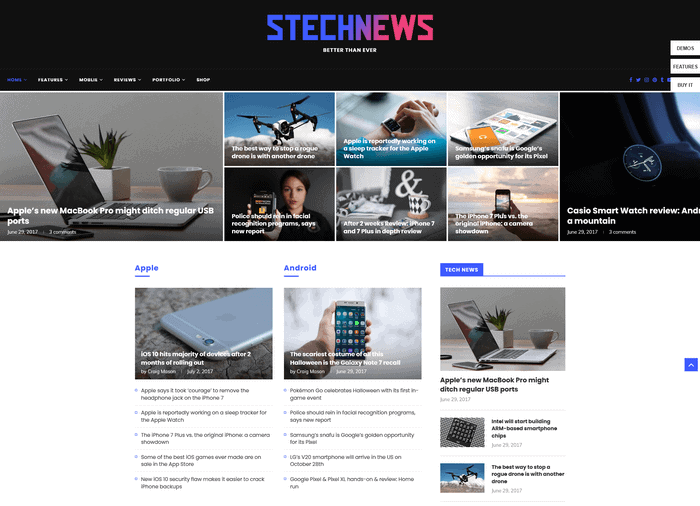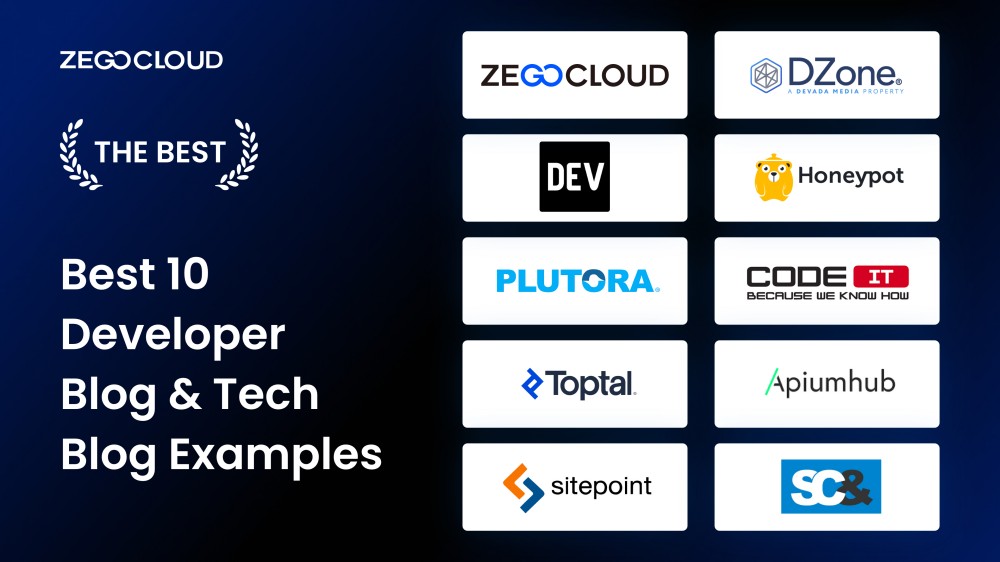Why the Best tech blog is Your Best Source for Professional Reviews and Insights
Why the Best tech blog is Your Best Source for Professional Reviews and Insights
Blog Article
Recognizing the Surge of Edge Computer in Today's Digital Globe
In the quickly developing landscape of technology, edge computer arises as an essential force, improving how data is processed and used. By transitioning data management closer to the source, side computer addresses critical latency problems while enhancing transmission capacity usage and enhancing safety measures.
What Is Edge Computer
Side computing, although a fairly current innovation in the realm of modern technology, fundamentally changes how data is refined and managed by bringing computation and data storage closer to the place where it is needed. Unlike typical cloud computer designs, which typically depend on centralized data facilities that can be geographically remote, side computing decentralizes information handling. This proximity reduces latency, improves real-time information processing, and enhances the overall customer experience by guaranteeing faster response times.
At its core, edge computing includes a network of localized tools and facilities, such as sensing units, portals, and routers, capable of processing data at or near the resource. This local processing capacity is especially crucial for applications calling for instant information analysis, such as self-governing vehicles, commercial automation, and wise cities. In addition, by offloading data processing tasks from central web servers, side computing reduces transmission capacity requirements and improves data personal privacy and safety, as delicate info can stay on-site instead than going across comprehensive networks.

Key Chauffeurs of Fostering
Several factors are pushing the fostering of side computing in today's electronic landscape. One of the main chauffeurs is the rapid boost in connected devices, often described as the Net of Points (IoT) This surge develops huge amounts of information that need to be processed promptly and effectively. Side computing addresses this demand by allowing information processing closer to the data resource, decreasing latency and improving real-time decision-making capabilities.
An additional significant chauffeur is the need for enhanced transmission capacity performance. Centralized cloud systems can come to be overwhelmed with the large volume of information produced by IoT tools, causing bottlenecks (Best tech blog). By processing information at the side, companies can minimize network blockage and enhance overall system efficiency
Moreover, safety and privacy worries are pressing organizations toward side computing. By processing delicate data in your area, firms can mitigate threats connected with data transmission and exposure to prospective cyber risks.
The increase of applications requiring real-time processing, such as independent lorries and enhanced reality, likewise demands the quick feedback times that border calculating supplies. Jointly, these drivers are making side computing a crucial element of modern-day IT facilities, leading the way for its prevalent fostering across numerous industries.
Advantages Over Cloud Computer
How does edge computer distinguish itself from standard cloud computing? Mainly, edge computing brings data handling closer to the source of information generation, often on local tools or neighboring servers, instead of counting on central data centers. This proximity dramatically lowers latency, allowing real-time information processing and decision-making. For markets where milliseconds official site issue, such as self-governing vehicles or industrial automation, the minimized latency supplied by edge computer can be crucial.
In addition, edge computer improves data transfer performance (Best tech blog). By processing information in your area, just the needed information is sent to the cloud for more evaluation or storage, minimizing the volume of data that passes through the network. This not only eases network blockage however additionally lowers data transmission costs
Edge computer also uses better data personal privacy and safety. Sensitive data can be refined in your area without being sent to the cloud, decreasing the direct exposure to prospective cyber hazards. This is especially useful for sectors managing secret information, such as medical care and monetary services.
Additionally, edge computer guarantees better resilience and integrity. Local handling enables continued operation also when connection to the cloud is compromised, keeping vital functions and solutions regardless of prospective network disturbances. These advantages jointly demonstrate edge computing's transformative capacity in optimizing efficiency and safety in digital communities.
Factors To Consider and difficulties
While edge computing uses countless benefits, it likewise offers distinct challenges and considerations that need to be dealt with to totally recognize its potential. One considerable obstacle is data security and privacy. Processing information better to the resource enhances the danger of unauthorized gain access to, necessitating durable encryption and strict safety methods to secure delicate information. Additionally, managing and keeping track of a decentralized network of side tools can be intricate, needing innovative tools and methods to make sure seamless procedure and upkeep.
Another factor to consider is the scalability of edge computer options. As the number of connected gadgets grows, so does the demand for refining power at the side, which can cause source restraints. Organizations has to carefully prepare their infrastructure to fit this growth without compromising efficiency or efficiency.
Interoperability is another crucial element. With numerous hardware and software application components involved, ensuring compatibility and seamless assimilation can be tough. Standardization efforts are vital to promote communication between disparate systems.
Future Fads in Side Computer
Expecting the future, side computer is positioned to reinvent different markets by check it out making it possible for much faster information handling and decreasing latency. As the quantity of information created by IoT gadgets continues to grow, side computing will certainly become progressively crucial in handling this influx effectively. One significant pattern is the combination of expert system at the side, permitting real-time analytics and decision-making without relying on cloud-based resources. This shift is anticipated to boost applications in independent cars, wise cities, and health care, where immediate data handling is essential.
Another arising trend is the growth of edge-native applications made specifically to take advantage of the one-of-a-kind capabilities of side computing. These applications will certainly maximize efficiency and resource usage, bring about enhanced effectiveness throughout numerous markets. Improvements in 5G technology will certainly additionally reinforce side computer by giving the needed framework Homepage for high-speed, low-latency communication between gadgets and side nodes.
Final Thought
Side computing's increase is driven by the spreading of IoT tools and the need for real-time data processing, which enhances efficiency by decreasing latency and decentralizing data management. This strategy reduces transmission capacity inefficiencies and protection issues, promoting developments in applications like autonomous lorries and smart cities. Regardless of challenges such as facilities complexity and assimilation, the future of side computer guarantees an extra responsive digital community, with continued innovations shaping its development and expanding its applicability throughout sectors.
Side computing, although a reasonably current advancement in the world of innovation, basically transforms how information is processed and managed by bringing computation and data storage closer to the location where it is required. Unlike typical cloud computing designs, which usually count on centralized data centers that can be geographically remote, edge computing decentralizes information handling. In addition, by unloading information processing jobs from main web servers, side computer decreases bandwidth demands and improves data privacy and protection, as delicate information can continue to be on-site instead than going across substantial networks.

Report this page